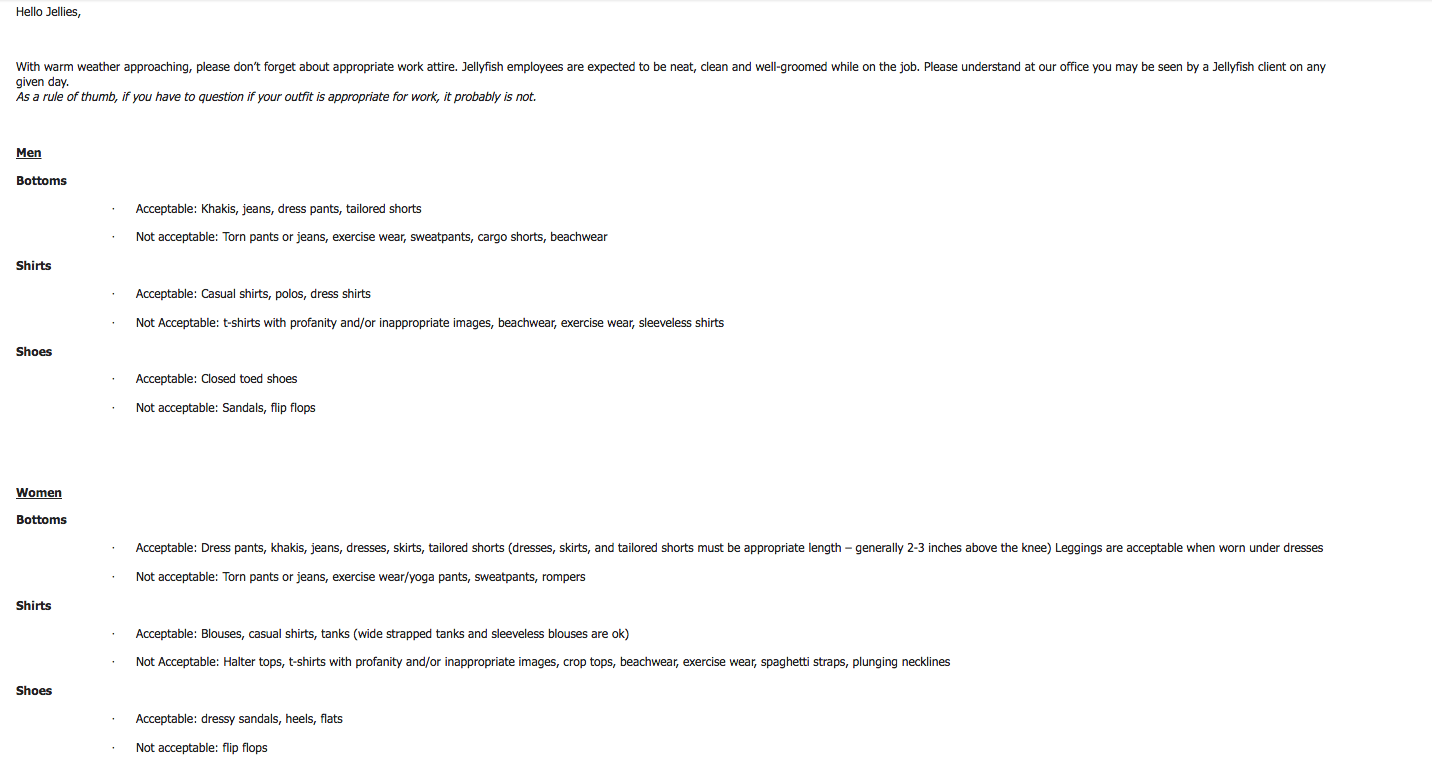
DigitasLBi’s Community Service Day last week wasn’t just a day to volunteer to clean up a park or help out in a community kitchen. It was also a day to free the knees. On “Wear Shorts Day,” employees were encouraged to rock their favorite pair and post pictures with them on Instagram, with the best shorts promised a special prize.
DigitasLBi isn’t the only agency embracing an increasingly casual workplace attire. A far cry from the tight-fitted gray suits and crisp collars of the Mad Men era, ad agency wardrobes have veered more toward designer tees and breezy flannels for years now. Increasingly, that includes shorts, in days not long ago thought more appropriate to a barbecue than a place of business. The shift is emblematic of modern-day agency culture, where the lines between work and life are ever more blurred.
“People not only spend a lot of time with each other at work but also hang out with each other all the time outside of the office,” said Ashley Hartsell, HR manager at Jellyfish. “It’s about comfort, since work is an extension of life.”
That sentiment is echoed across many other prominent agencies, including iCrossing, Huge, DDB, Anomaly, GSD&M and MEC. None of these agencies have formal guidelines in place and dress codes are not typically regulated. “Business casual” is left open to interpretation, and staffers are free to wear what they want, often resulting in a wide array of togs: from graphic tees and shorts on the one hand to fitted pencil skirts and classic suits on another.
A lot of it can be attributed to the creative nature of the business. Agency staffers have more freedom to experiment with their wardrobes because it uplifts the hip factor of the agencies themselves, said Jennifer Catherall, chief talent officer at Tribal New York and DDB New York. And for Anomaly’s talent & HR manager, Evan Wolfe, it’s counterproductive to put restrictions on people’s sartorial choices because to limit expression means to limit their creativity.
“Advertisers need to be fully entrenched with current cultural trends and thus tend to dress trendier than other industries — it’s just a part of who they are,” Catherall said. “For that reason, things are more acceptable. We get away with being more casual because we are expected to be the cool creative ones.”
And in the summer, when it can reach a humid 90 degrees in New York, staffers can get away with even more. Shorts are sported by both men and women. Anomaly’s Wolfe estimated that at least half of the agency’s 300 employees settle for shorts on any given day in the summer, while GSD&M’s HR director Marci Rogers said that “people wear shorts all the time.”
But that’s not to say agencies don’t draw the line at all. Flip flops, for example, are still a no-no at most agencies. Agencies also implicitly encourage those on the client-facing side of the business to be more careful with their ensembles, and they acknowledge that there are sometimes instances where people have either forgotten to dress appropriately for important meetings or been given gentle reminders. Jellyfish has gone a step further and circulated a memo to its staffers on what’s “acceptable” and what’s “not acceptable” this summer. Tailored shorts get a thumbs up, but cargo shorts, cut-offs and rompers are deemed inappropriate.

“My grandmother always told me to leave the house ready to meet the president — you never know who you will run into or where,” said Shenan Reed, North America president of digital at MEC. “Now, while I don’t always follow that advice, I think it’s a good nugget to keep in the back of your mind. If all of a sudden you were told you had to go on stage or jump into a client meeting to cover for a colleague, would you be ready?”
Still, even fans of shorts make sure they’re not overstepping boundaries. Andrew Earley, communications manager at iCrossing subscribes to a personal rule-of-thumb, which he calls the “nine and six rule.” If the length of the shorts is over nine inches, he has no qualms about him or anyone else wearing them to work. But if it’s less than six inches, “you better be heading to the beach.”
More in Marketing

Best Buy, Lowe’s chief marketing officers explain why they launched new influencer programs
CMOs launched these new programs in response to the growing importance of influencers in recommending products.

Agencies create specialist units to help marketers’ solve for AI search gatekeepers
Wpromote, Kepler and Jellyfish practices aim to illuminate impact of black box LLMs’ understanding of brands search and social efforts.

What AI startup Cluely gets — and ad tech forgets — about attention
Cluely launched a narrative before it launched a tool. And somehow, it’s working.





